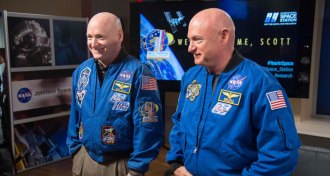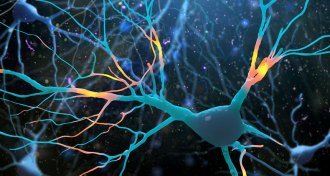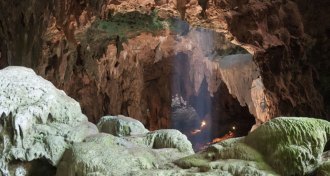Humans
Sign up for our newsletter
We summarize the week's scientific breakthroughs every Thursday.
-
 Health & Medicine
Health & Medicine‘Added sugar’ food labels may prevent heart disease and diabetes
Nutrition labeling changes that highlight sugar added to food or drink may have large benefits for public health, researchers say.
-
 Archaeology
ArchaeologyNewly translated Cherokee cave writings reveal sacred messages
Cherokee inscriptions highlight the tribe’s rituals nearly 200 years ago in what’s now a tourist cave in Alabama.
By Bruce Bower -
 Health & Medicine
Health & MedicinePeople with stress disorders like PTSD are at higher risk of heart disease
Those coping with psychological trauma have a greater risk for cardiovascular disease, a large-scale study that goes beyond men and veterans finds.
By Maanvi Singh -
 Archaeology
Archaeology‘Cities’ reveals common ground between ancient and modern urban life
In the book ‘Cities,’ archaeologist Monica Smith sees the positives in past and present metropolises.
By Bruce Bower -
 Health & Medicine
Health & MedicineU.S. measles outbreaks show no signs of slowing down
This year’s measles cases have blown by 2018’s total, raising the specter that the disease could once more become endemic in the United States.
-
 Genetics
GeneticsSome people may have genes that hamper a drug’s HIV protection
Newly discovered genetic variants could explain why an anti-HIV medication doesn’t protect everyone.
-
 Health & Medicine
Health & MedicineNASA’s Twins Study reveals effects of space on Scott Kelly’s health
Ten research groups studying the twin astronauts found long-term spaceflight can alter a person’s physiology and gene activity.
By Jeremy Rehm -
 Health & Medicine
Health & MedicineKetamine cultivates new nerve cell connections in mice
In mice, ketamine prods nerve cells to connect, which may explain the hallucinogenic drug’s ability to ease depression.
-
 Anthropology
AnthropologyA new hominid species has been found in a Philippine cave, fossils suggest
Cave fossils found in the Philippines come from a newly discovered member of the human lineage, researchers say.
By Bruce Bower -
 Health & Medicine
Health & MedicineChickens stand sentinel against mosquito-borne disease in Florida
To learn where mosquitoes are transmitting certain viruses, Florida officials deploy chickens and test them for antibodies to the pathogens.
-
 Health & Medicine
Health & MedicineA common food additive may make the flu vaccine less effective
A food preservative may impair the ability to fight the flu, a study in mice suggests.
-
 Health & Medicine
Health & MedicineWhen an older person’s brain waves are in sync, memory is boosted
A brain stimulation treatment that nudges older people’s brain waves into sync could lead to noninvasive therapies for dementia and other disorders.